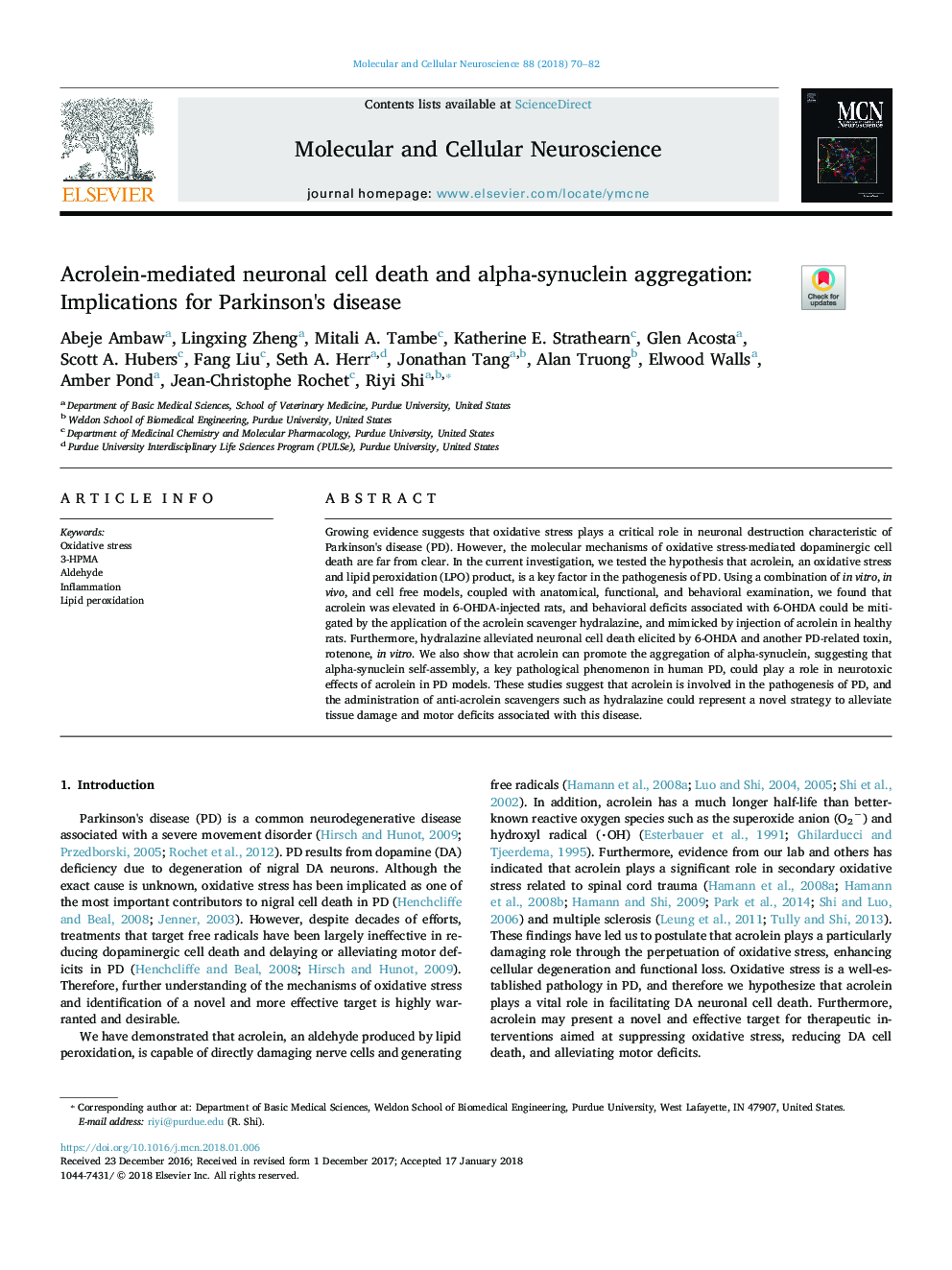| کد مقاله | کد نشریه | سال انتشار | مقاله انگلیسی | نسخه تمام متن |
|---|---|---|---|---|
| 8478370 | 1551118 | 2018 | 13 صفحه PDF | دانلود رایگان |
عنوان انگلیسی مقاله ISI
Acrolein-mediated neuronal cell death and alpha-synuclein aggregation: Implications for Parkinson's disease
ترجمه فارسی عنوان
مرگ سلول های عصبی متخلص شده توسط اکرولین و تجمع آلفا سینوئولین: پیامدهای بیماری پارکینسون
دانلود مقاله + سفارش ترجمه
دانلود مقاله ISI انگلیسی
رایگان برای ایرانیان
کلمات کلیدی
موضوعات مرتبط
علوم زیستی و بیوفناوری
بیوشیمی، ژنتیک و زیست شناسی مولکولی
بیولوژی سلول
چکیده انگلیسی
Growing evidence suggests that oxidative stress plays a critical role in neuronal destruction characteristic of Parkinson's disease (PD). However, the molecular mechanisms of oxidative stress-mediated dopaminergic cell death are far from clear. In the current investigation, we tested the hypothesis that acrolein, an oxidative stress and lipid peroxidation (LPO) product, is a key factor in the pathogenesis of PD. Using a combination of in vitro, in vivo, and cell free models, coupled with anatomical, functional, and behavioral examination, we found that acrolein was elevated in 6-OHDA-injected rats, and behavioral deficits associated with 6-OHDA could be mitigated by the application of the acrolein scavenger hydralazine, and mimicked by injection of acrolein in healthy rats. Furthermore, hydralazine alleviated neuronal cell death elicited by 6-OHDA and another PD-related toxin, rotenone, in vitro. We also show that acrolein can promote the aggregation of alpha-synuclein, suggesting that alpha-synuclein self-assembly, a key pathological phenomenon in human PD, could play a role in neurotoxic effects of acrolein in PD models. These studies suggest that acrolein is involved in the pathogenesis of PD, and the administration of anti-acrolein scavengers such as hydralazine could represent a novel strategy to alleviate tissue damage and motor deficits associated with this disease.
ناشر
Database: Elsevier - ScienceDirect (ساینس دایرکت)
Journal: Molecular and Cellular Neuroscience - Volume 88, April 2018, Pages 70-82
Journal: Molecular and Cellular Neuroscience - Volume 88, April 2018, Pages 70-82
نویسندگان
Abeje Ambaw, Lingxing Zheng, Mitali A. Tambe, Katherine E. Strathearn, Glen Acosta, Scott A. Hubers, Fang Liu, Seth A. Herr, Jonathan Tang, Alan Truong, Elwood Walls, Amber Pond, Jean-Christophe Rochet, Riyi Shi,
